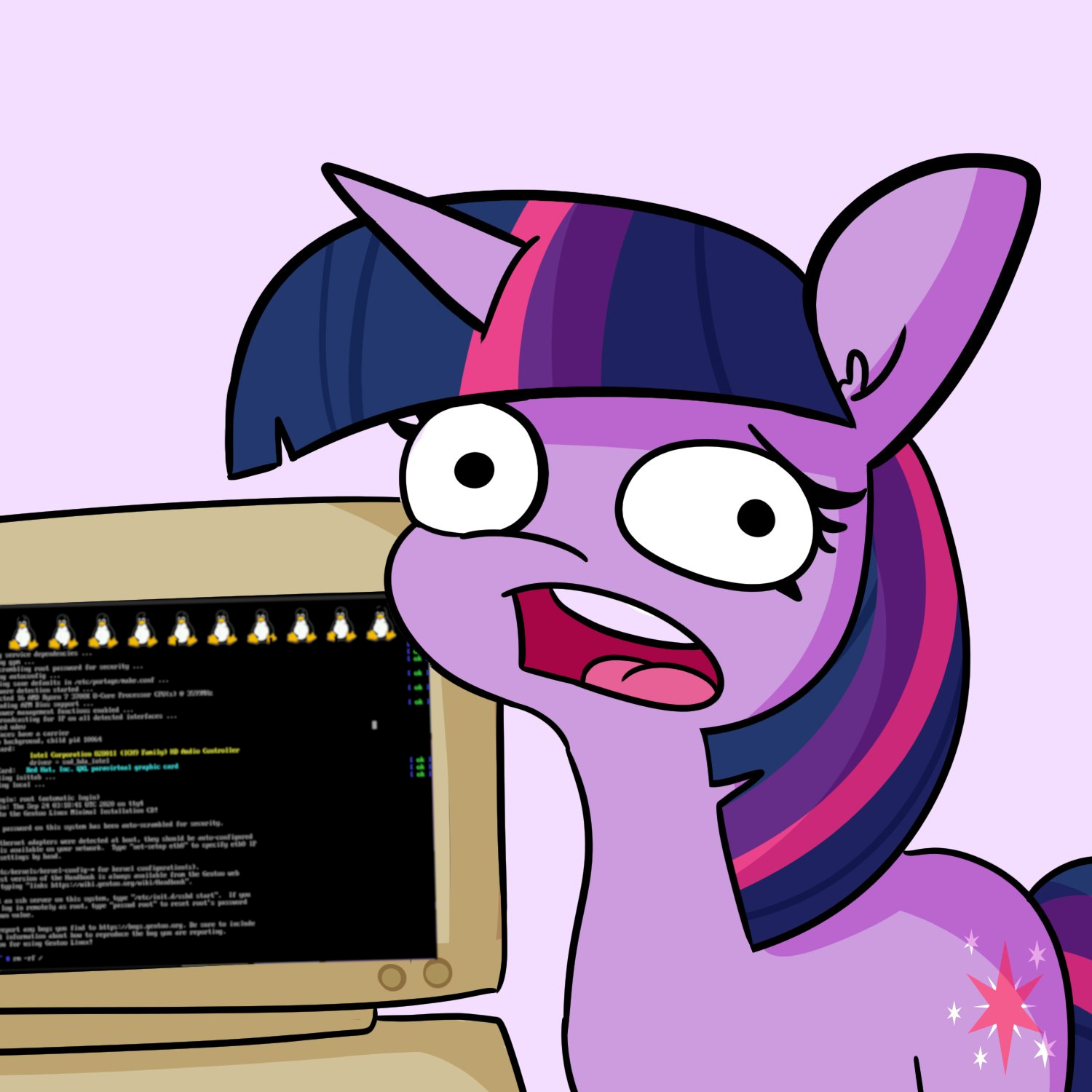Arch with Wayland and Pipewire. Running SwayWM and have never been happier with my setup.
Linux
From Wikipedia, the free encyclopedia
Linux is a family of open source Unix-like operating systems based on the Linux kernel, an operating system kernel first released on September 17, 1991 by Linus Torvalds. Linux is typically packaged in a Linux distribution (or distro for short).
Distributions include the Linux kernel and supporting system software and libraries, many of which are provided by the GNU Project. Many Linux distributions use the word "Linux" in their name, but the Free Software Foundation uses the name GNU/Linux to emphasize the importance of GNU software, causing some controversy.
Rules
- Posts must be relevant to operating systems running the Linux kernel. GNU/Linux or otherwise.
- No misinformation
- No NSFW content
- No hate speech, bigotry, etc
Related Communities
Community icon by Alpár-Etele Méder, licensed under CC BY 3.0
Artix (Basically Arch without Systemd)
Does artix only boot without systemd or is it completely systemd-less? If it is systemd-less, how do services like docker work with that?
Most services just need the init system to start, stop and monitor them. There's no special integration needed for each of them beyond running a command, monitoring the PID, and killing the PID when it's time to stop.
If you mean the special integration of docker and podman with systemd, first of all that's only required in rootless mode and not everybody runs rootless (most users probably run root docker). In rootless mode you have to manage each container individually as if it were a standalone service instead of just managing docker. Basically you have to integrate each container into the init system, whatever that is. There are some tools that make it easier to with podman+systemd because they write the systemd units for you but you can do it with any init system. The distro mostly doesn't care because you have to do the work not them.
Nobara these days. It's based on Fedora 38.
When it comes to distros, I am a boring man with a boring POV: I just want the thing to work with as little fuss as possible. Consequently, I'm on Kubuntu. KDE is rock solid, and Ubuntu is what I'm used to.
If/when my OS ever breaks down hard enough to reinstall, I'll probably install Fedora Workstation.
Acura MDX
NixOS and Debian. Probably just NixOS in the near future.
Endeavouros on Laptop and main PC. Loving it.
I've been using OpenSuse Slowroll basically since it released and so far am very happy with it.
After years of Manjaro (and I still use it on most of my computers), I'm trying out Nobara KDE to see how it keeps up for gaming. It has a number of optimizations that Glorious Eggroll has compiled and seems pretty fast compared to Manjaro on the same hardware. I imagine I could do all the changes on Manjaro, but I also wanted to see how Fedora runs these days, it's been a long time since I used it on the daily.
So far, so good.
I'm using Mint, but I've avoided using flatpaks (generally downloading DEB packages directly, or adding ppa sources). It's worked pretty well so far.
I do have a handful of AppImages, but they're a bit easier to work with.
Pop!_OS on my desktop and laptop since 2020.
void linux (glibc) + swayfx + waybar + foot terminal + nushell
Pretty happy with Debian Testing. Frequent updates but still very stable and rock solid.
Arch Linux with i3wm
Fish, Alacritty, Rofi (dmenu replacement)
Debian testing. Seriously. That is reasonably easy to install and configure unlike Arch or Gentoo, but doesn't come with "user friendly" corporate crap like Ubuntu and its derivatives.
Fedora immutable (ublue kinoite) has been so bulletproof. Moved from Arch, which is now on distrobox, so painless. Now ~ 1 year... 2 laptops + desktop, other is destined for NixOS...
Debian for a while, now Mint (I'm a Cinnamon freak)
Garuda Linux. In just love arch, but I'm too lazy to do it myself. One day maybe
Desktop: Arch KDE Laptop: MX Linux KDE
Arch + XFCE on my desktop. Have been for a while now, and everytime i try something else, I always come back to it. For my laptop, I've been using Gnome + extensions (Arch as well. That way I don't gotta switch gears and remember two different sets of commands) before i had to take it in for repairs. Was pretty good because of the mousepad gestures IMO.
Fedora. I've been looking into fedora silverblue and vanilla os as well but I'm chilling with regular fedora for now
I daily drive Fedora because RHEL is what my industry uses and it's good to stay on top of the technology.
Arch on my "desktop PC", Armbian on my rpi 4, Dietpi soon (tm) on my Orange pi zero 3.
Laptop and Workstation run Fedora. Servers run Proxmox.
Can't say that there is anything new and exciting. Big change for me has been that I have accepted flatpacks. I've gotten to the point where I don't care about being a purist, don't care about customizing and theming everything. I just want to use my computer.
Arch + gnome but it doesn't matter at this point
If you want the cool new thing, it's Nix
I tried nix actually. Personally, I think it would make a great server os, but I do not enjoy it as a daily driver. I didn't like the fact that I was forced to install everything through nix and couldn't compile software from source.
I've been using Mint Cinnamon for a while now. It runs beautifully with fewer firmware issues than Ubuntu on my XPS. Even though it shipped with Ubuntu.
